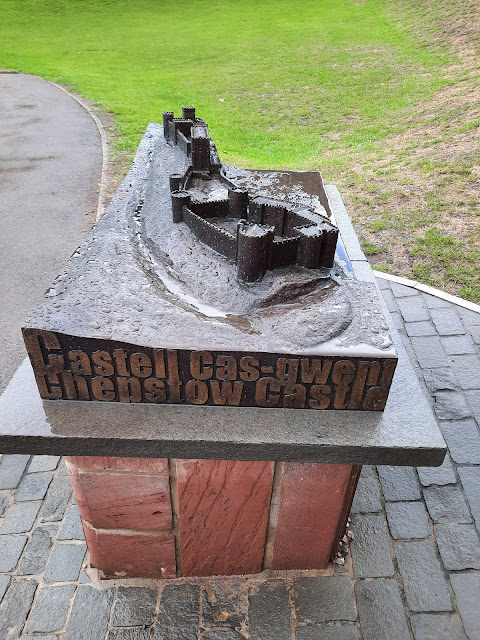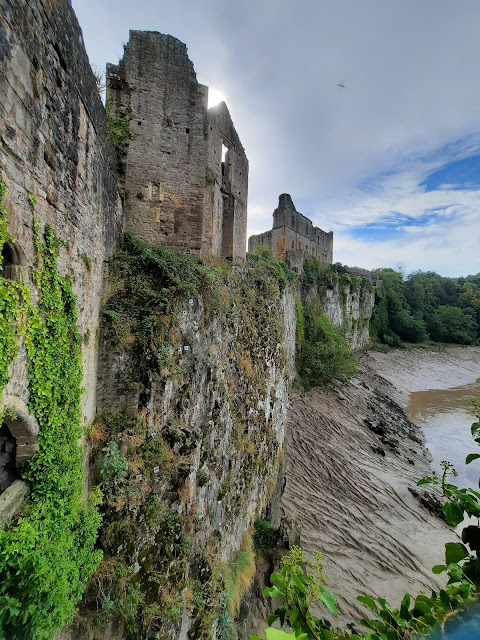As Hubby and I are now in our third year of membership with English Heritage we can enjoy free admission to all properties in Wales (CADW), Scotland (Historic Scotland) and OPW (Ireland).
On our recent trip to Cardiff we visited Tintern Abbey, Chepstow Castle and Raglan Castle. I have blogged each property separately and although my photos show just how superb the properties are I have added notes taken from the Cadw website.
Our second visit was to Chepstow Castle.
Chepstow Castle stretches out along a limestone cliff above the River Wye and is a great example of how castles gradually evolved to cope with ever more destructive weaponry and the grand ambitions of their owners.
For more than six centuries Chepstow was home to some of the wealthiest and most powerful men of the medieval and Tudor ages.
Building was started in 1067 by Earl William Fitz Osbern, a close friend of William the Conqueror. It was one of the first Norman strongholds in Wales but the castle declined after the Civil War.
William Marshal, a soldier who took part in military tournaments, began to attract Royal patrons. The first was Eleanor of Aquitaine and then her eldest son Prince Henry. This gave William enough power to raise his own banner (half green, half gold with a red lion rampant) and have a company of knights.
When Henry was dying in 1183 he commanded the faithful Marshal to take his cloak to the Holy Sepulchre in Jerusalem. Returning from the Holy Land in 1186 Marshal joined the military household of King Henry II and saw constant action in France.
It was Henry’s son, Richard the Lionheart, who rewarded Marshal’s loyalty by giving him the rich de Clare heiress Isabel in marriage. This is where the story of William Marshal and the history of Chepstow Castle began intertwined.
Isabel’s family had held Chepstow and other vast estates for most of the 12th century, and now William had become a chivalrous knight and was one of the richest men in the kingdom. However the castle had barely been touched for 100 years and it was William who brought it up to date building the first twin-towered gatehouse.
William also built a second line of defence, raising the height of the Norman walls and erecting a massive rectangular tower named Marshal’s Tower. The tired old Chepstow Castle became a formidable but suitably comfortable fortress.
William Marshal was one of those left in charge of the country when Richard the Lionheart went on crusade in 1190. He negotiated the Magna Carta on behalf of King John and ruled as regent of England for the young King Henry III until his death in 1219.
His was an extraordinary life and his legacy is preserved in the stones of an equally extraordinary castle, towering over the River Wye at this crucial gateway to Wales.















No comments:
Post a Comment